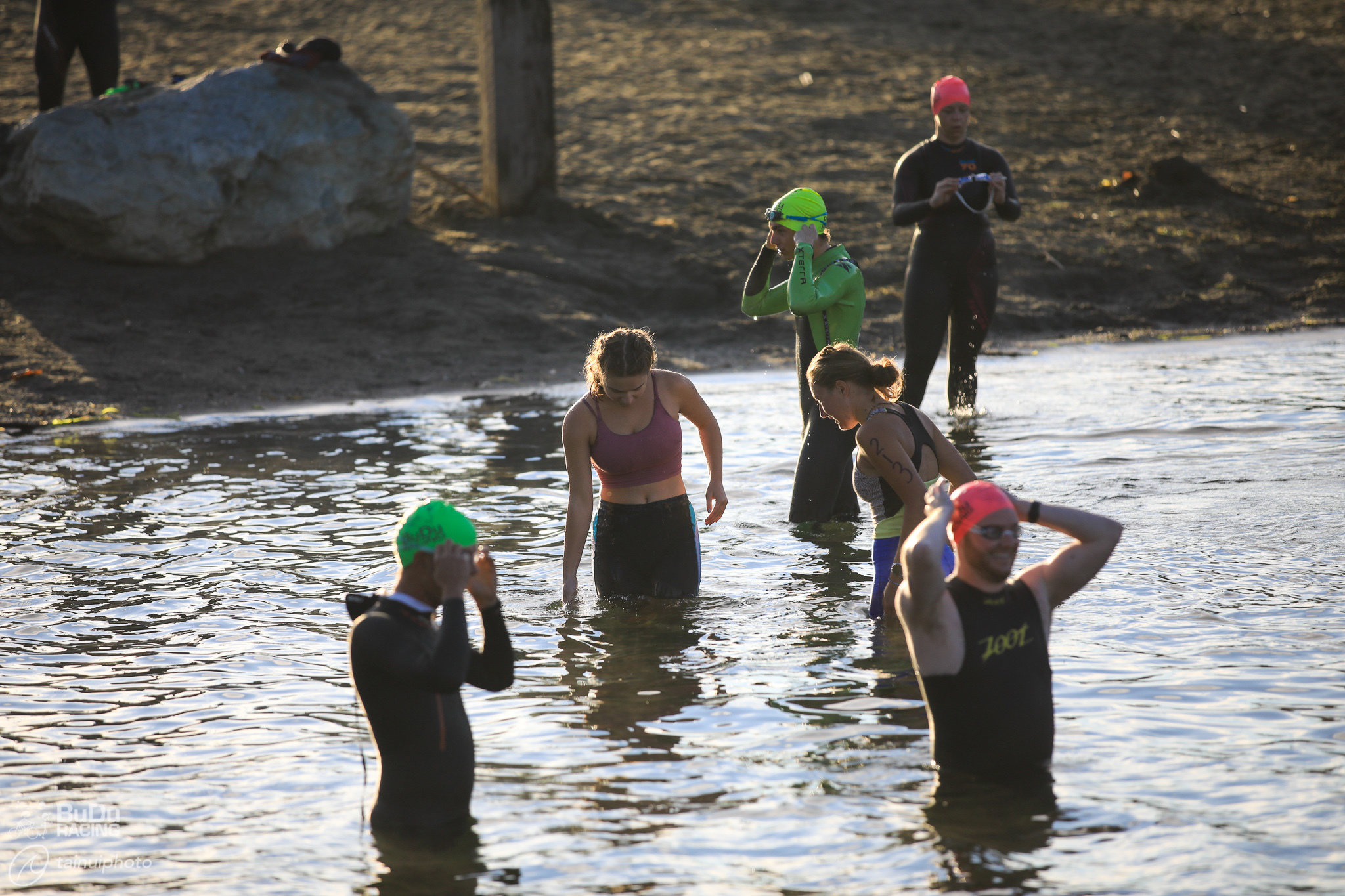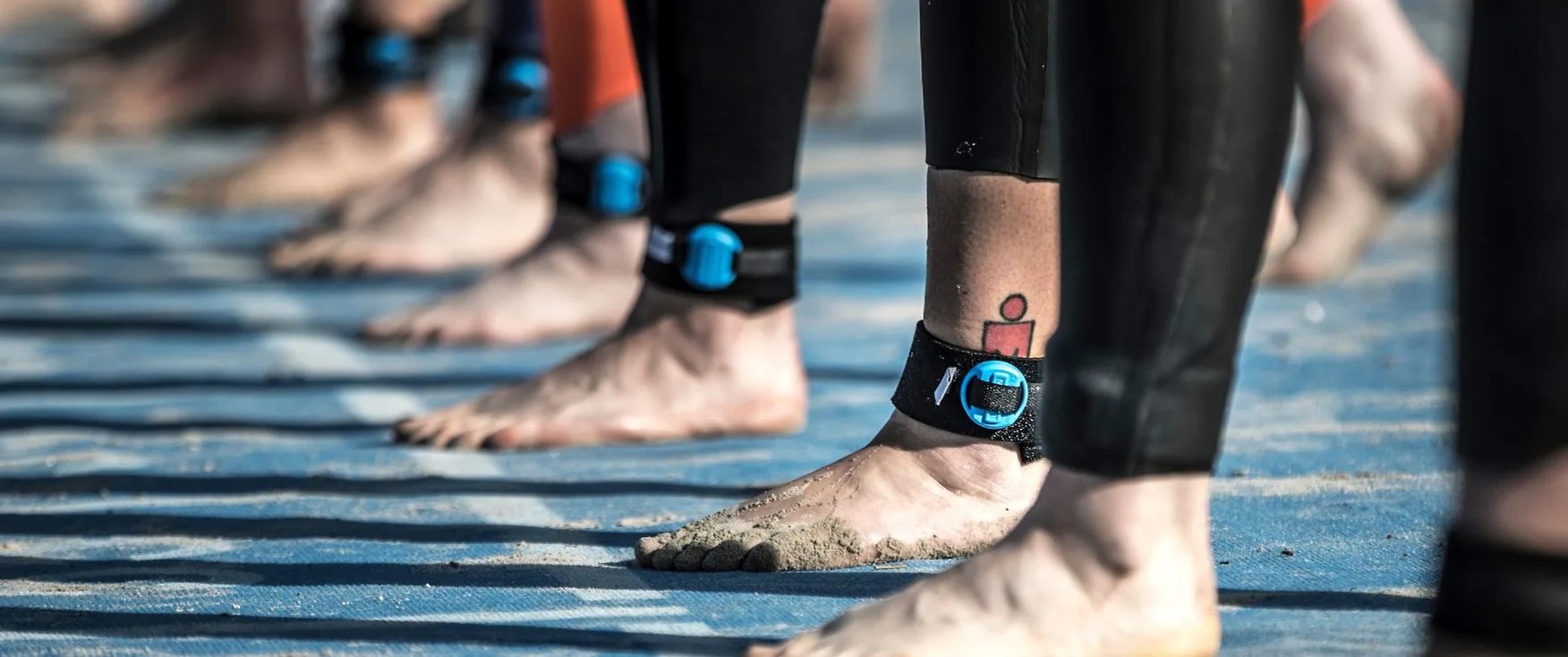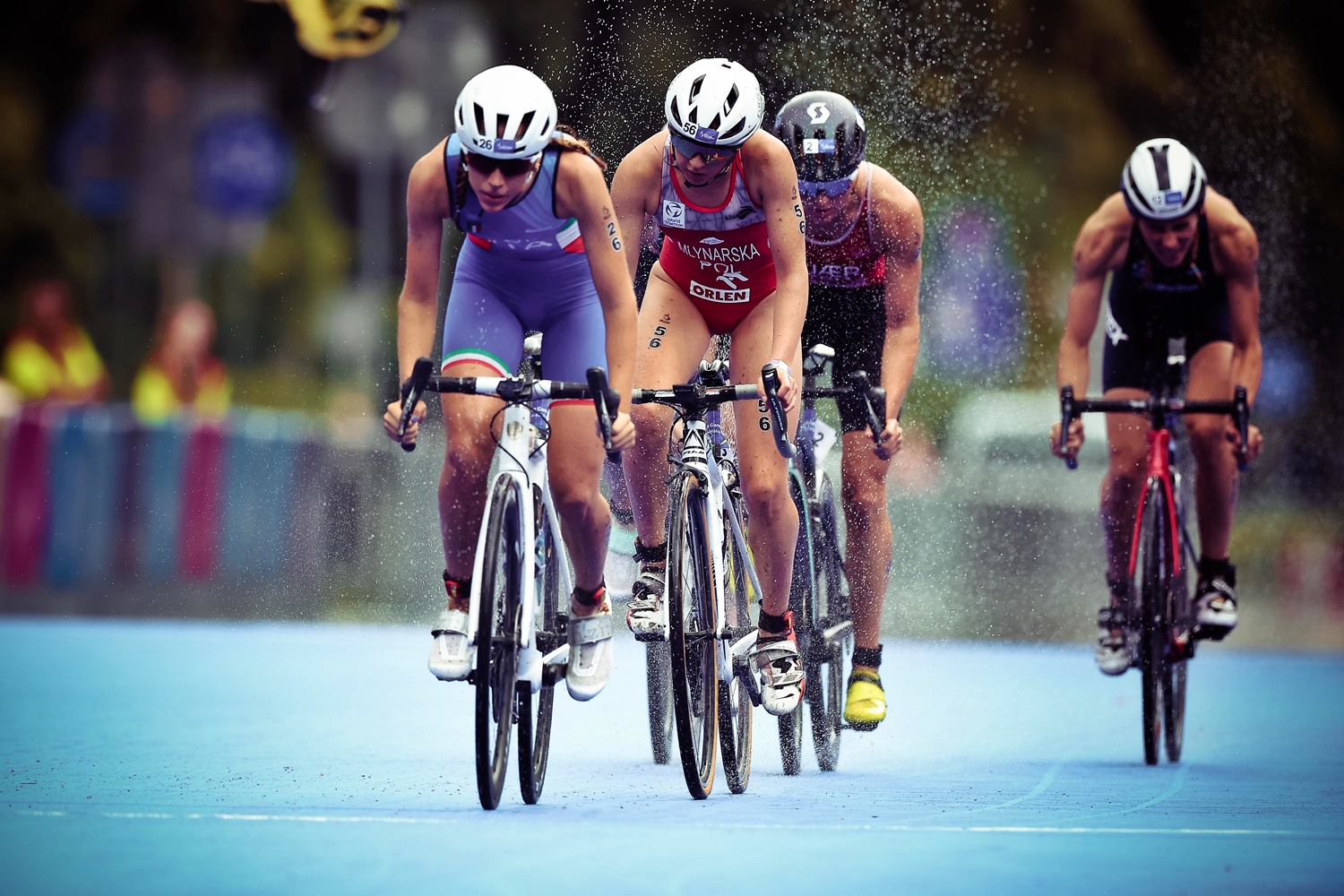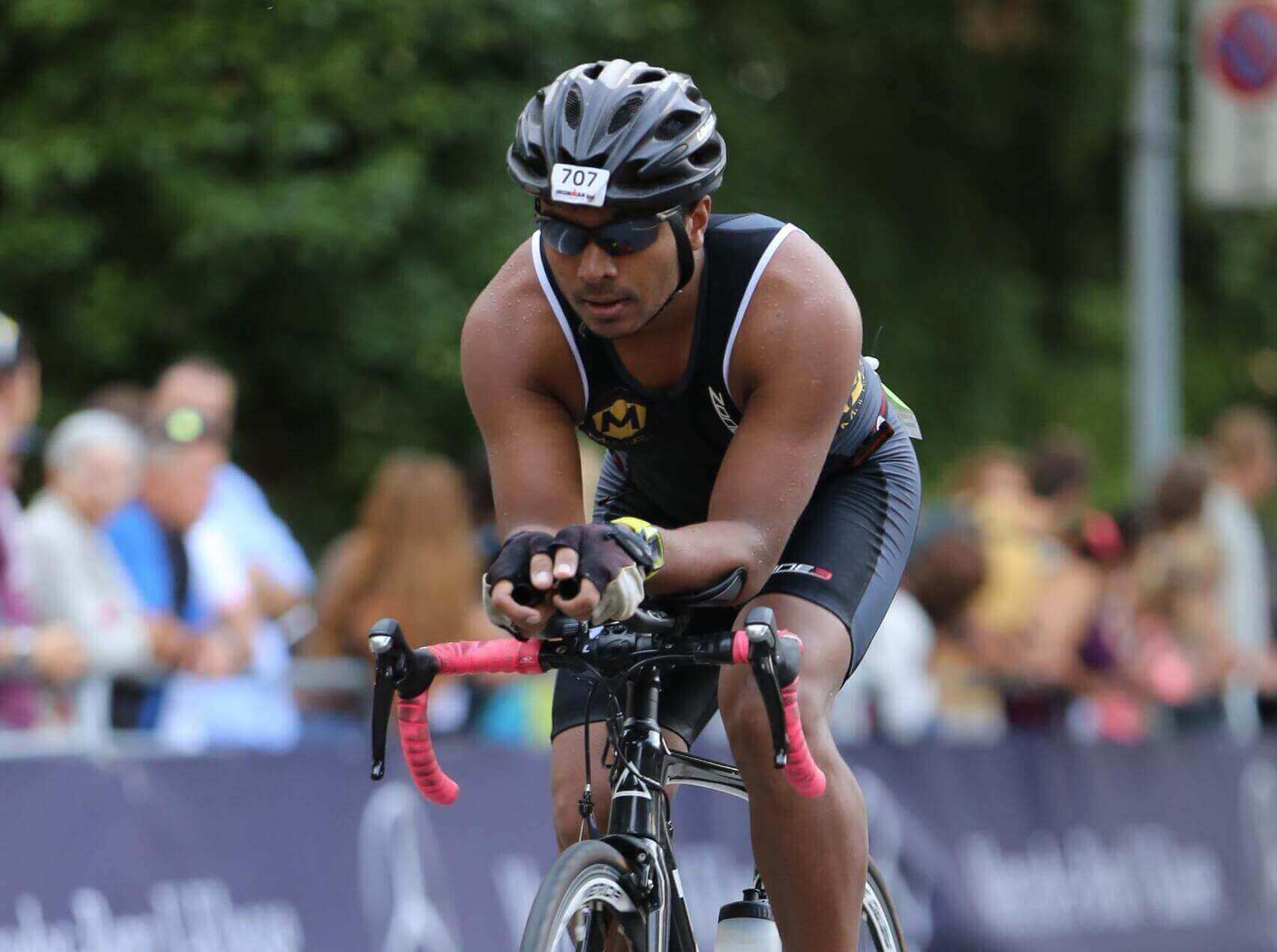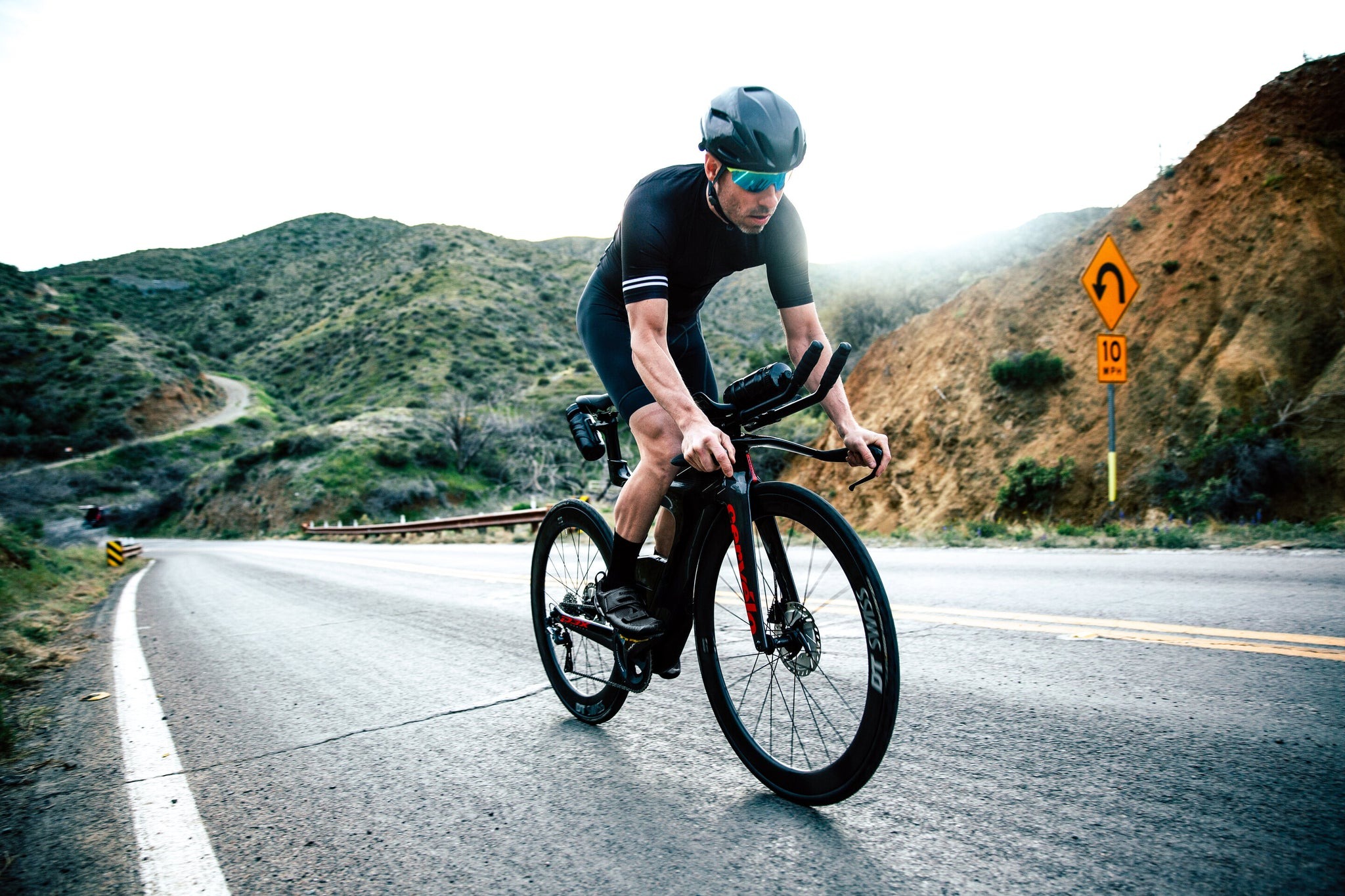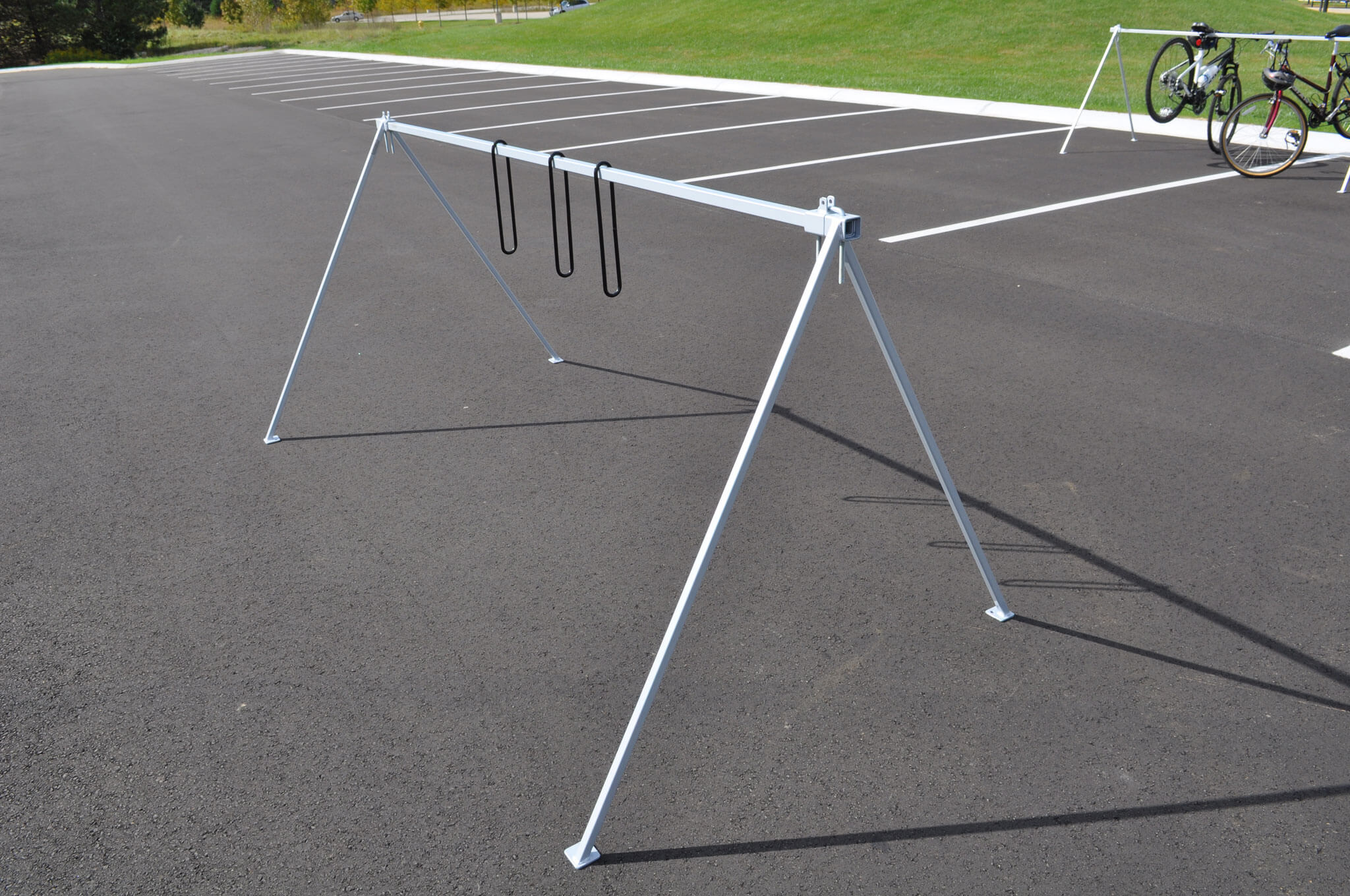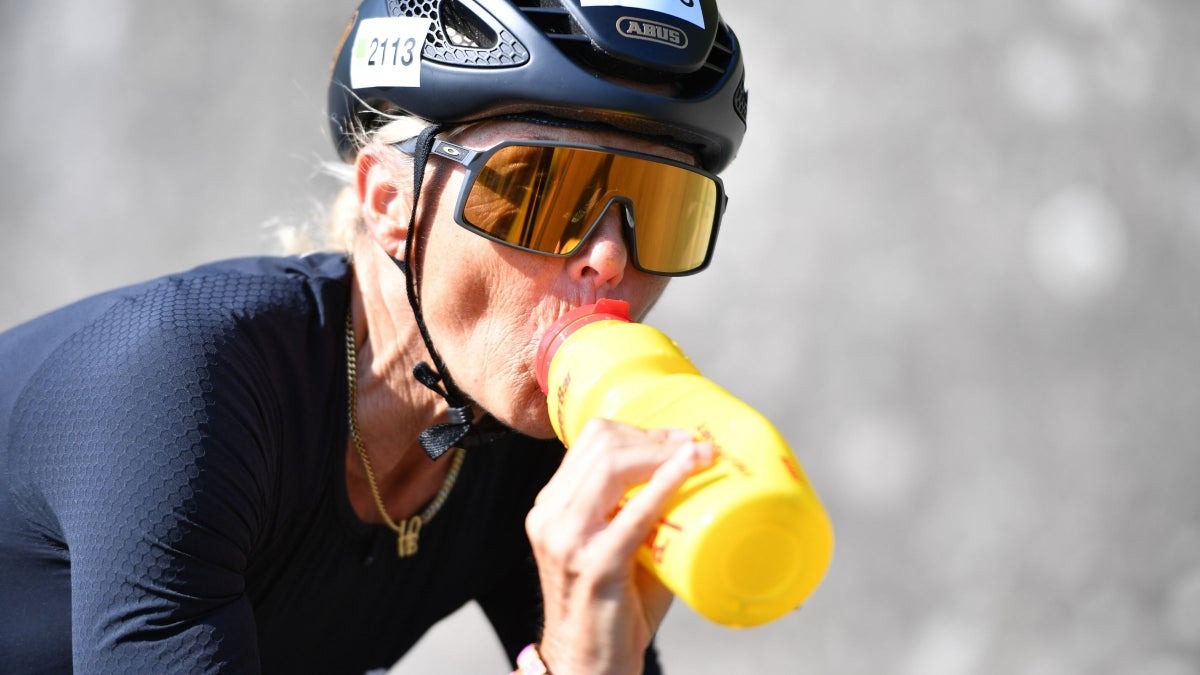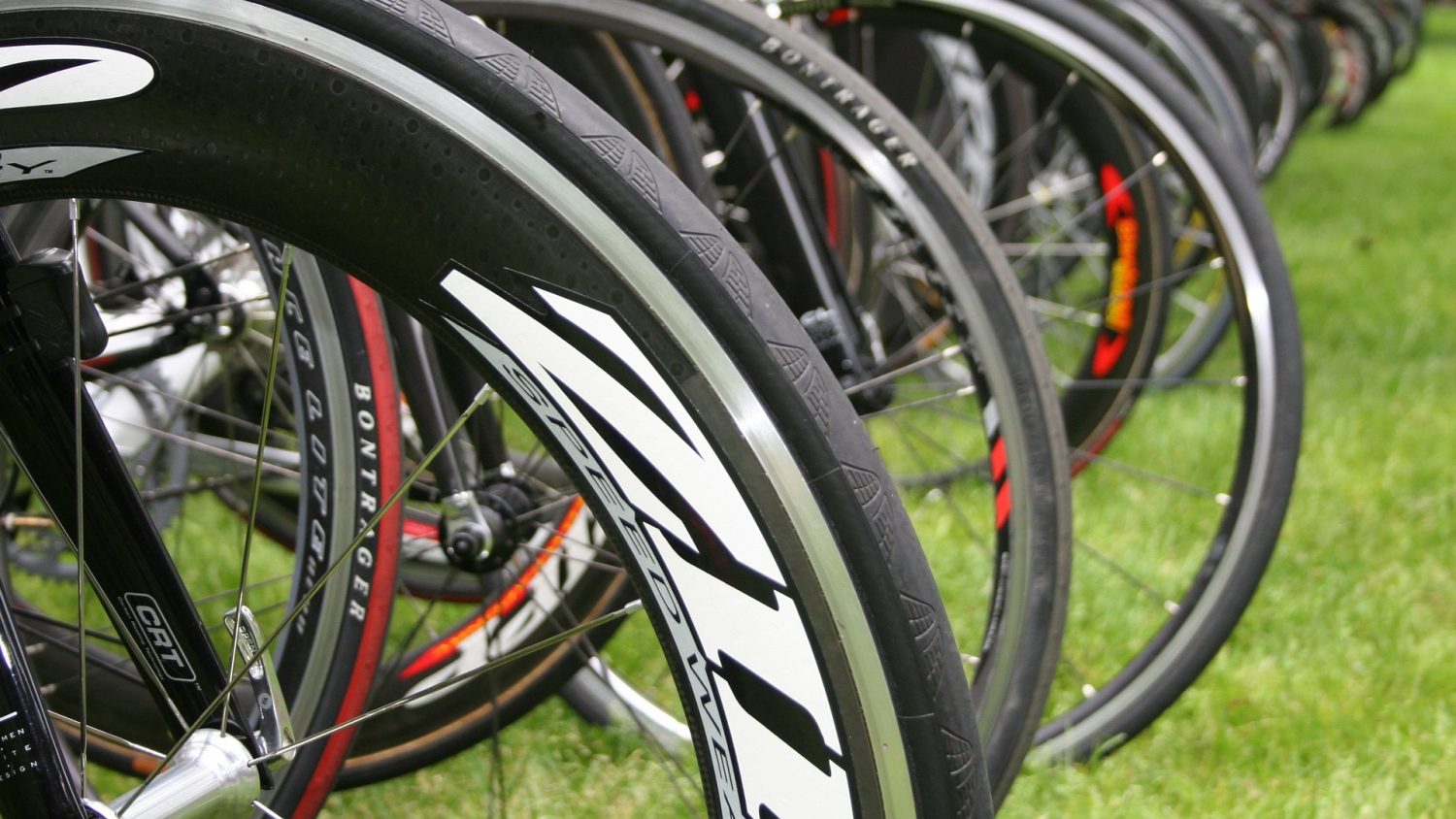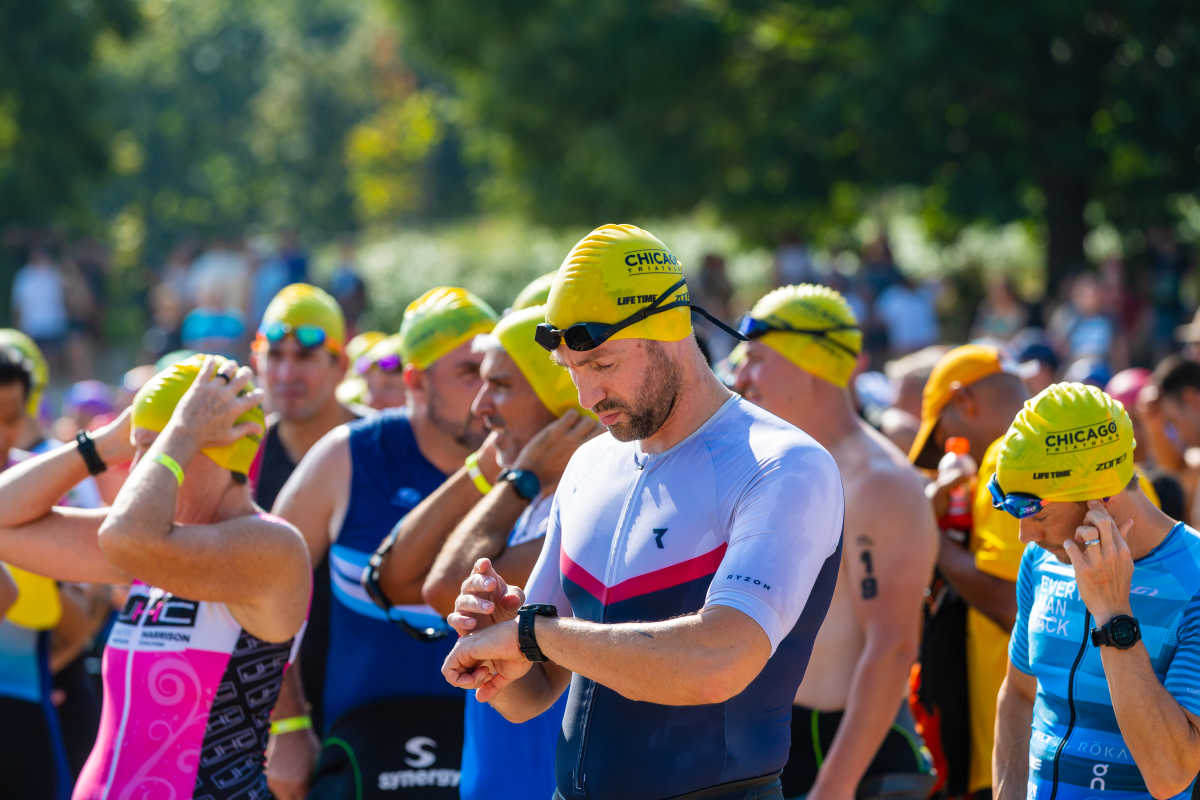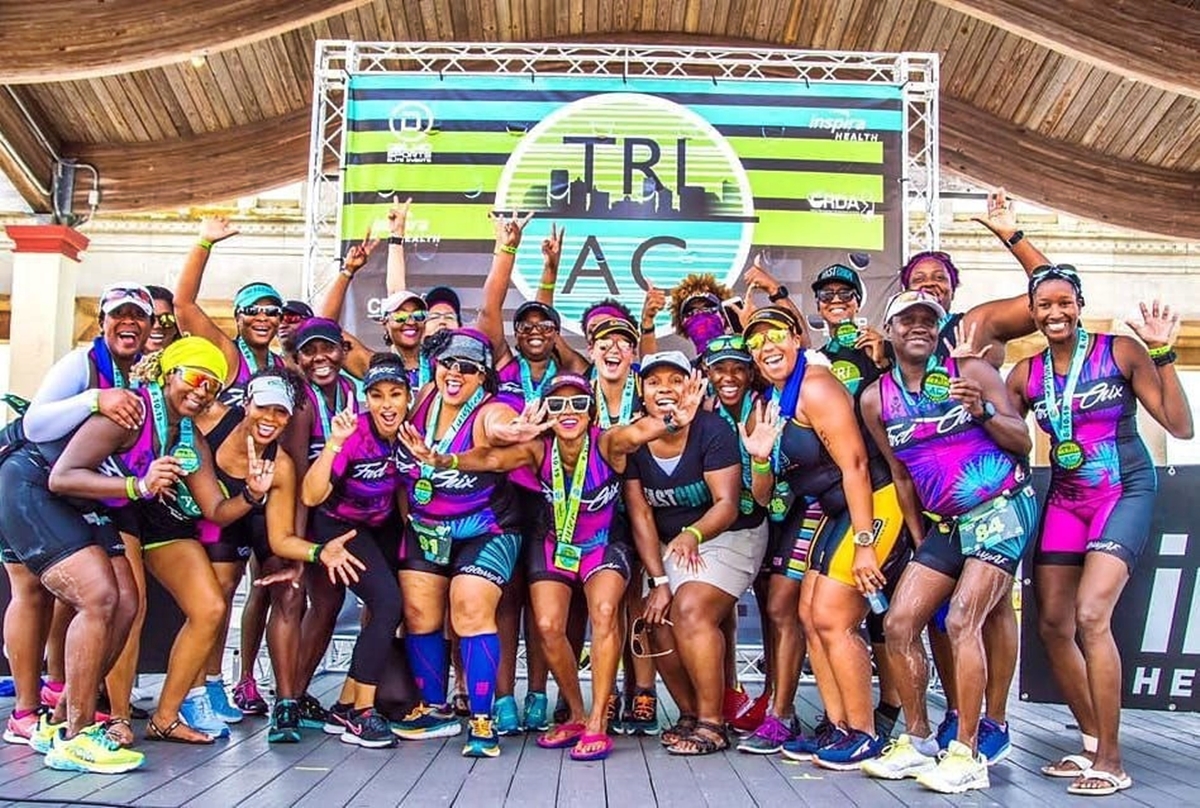Home>Misc>Product Reviews>How Much Does A Triathlon Cost
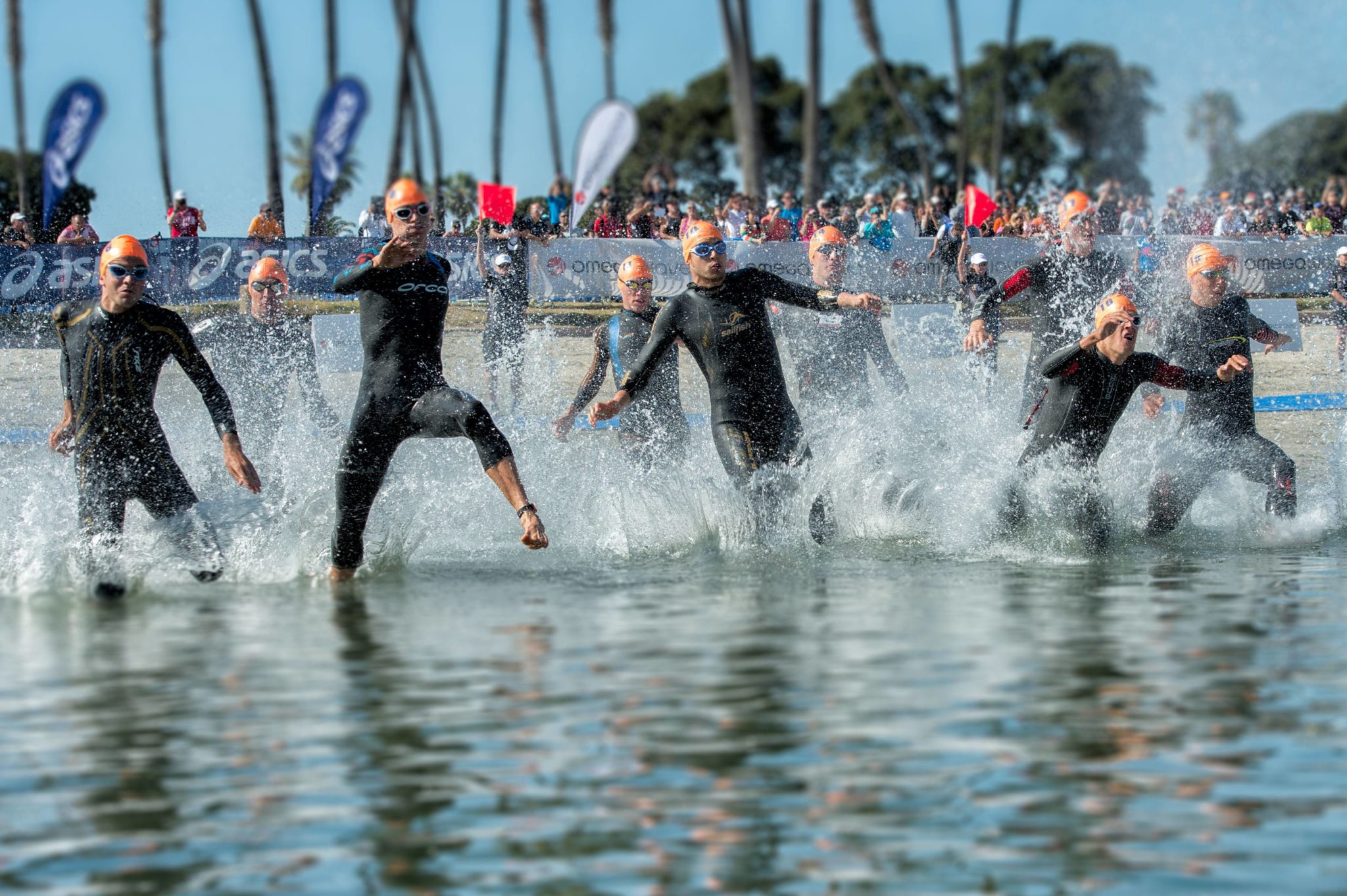

Product Reviews
How Much Does A Triathlon Cost
Modified: January 2, 2024
Looking for product reviews on the cost of a triathlon? Discover the average expenses and estimation for triathlon gear, registration fees, and more.
Introduction
Welcome to the exciting world of triathlons! Whether you’re a seasoned athlete or just starting out, participating in a triathlon is a thrilling adventure that tests your endurance, strength, and mental resilience. However, before you dive headfirst into this multisport challenge, it’s important to understand the various costs associated with it.
A triathlon is a race that includes three different disciplines: swimming, cycling, and running. As you can imagine, each of these sports requires specific equipment, training, and preparation. Additionally, there are other expenses to consider, such as registration fees, travel costs, and accommodations. In this article, we will explore the costs involved in participating in a triathlon, giving you a comprehensive overview to help you plan your budget accordingly.
It’s essential to note that the cost of participating in a triathlon can vary significantly depending on several factors, such as the race location, distance, and level of competition. However, by understanding the general expenses involved, you can get a better idea of what to expect and make informed decisions throughout your triathlon journey.
So, let’s dive into the different components that contribute to the overall cost of participating in a triathlon. From registration fees to training expenses and everything in between, we’ll provide you with a breakdown of the financial aspects to help you plan your triathlon experience effectively.
Registration Fees
One of the primary costs of participating in a triathlon is the registration fee. This fee grants you entry into the race and covers various services provided by the event organizers. The registration fee can vary depending on the race distance, location, and prestige of the event.
For local, shorter distance triathlons, the registration fees can range from $30 to $100. These races are often organized by smaller communities or triathlon clubs and offer a great opportunity for beginners to get their feet wet in the world of triathlons without breaking the bank.
On the other hand, for more prominent triathlon events like Ironman or ITU World Triathlon Series races, the registration fees can skyrocket. These events attract elite athletes from around the world and provide a high-level race experience. The fees for Ironman races can range from $300 to over $800, depending on the location and demand.
It’s important to register early for popular races as they tend to fill up quickly, leading to higher fees as the race date approaches. Many races offer early bird discounts, allowing you to save a significant amount of money by signing up well in advance. Additionally, some events offer discounted or special rates for military personnel, students, or members of certain organizations.
It’s crucial to thoroughly read the registration details to ensure that the fee covers all the essential services you are expecting, such as a race t-shirt, finisher’s medal, timing chips, and refreshments. Some races also provide additional perks like race photos and post-race celebrations, so be sure to check what’s included in the registration fee.
Keep in mind that many races have a strict no-refund policy, so it’s wise to evaluate your commitment and potential conflicts before registering. Some events, however, offer race insurance, allowing you to receive a refund or defer your entry in case of unforeseen circumstances.
Overall, the registration fee is a significant part of the cost of participating in a triathlon. It’s essential to factor in this expense when budgeting for your race and take advantage of early bird discounts, special rates, and payment plans if available.
Equipment Costs
Participating in a triathlon requires specific equipment for each of the three disciplines: swimming, cycling, and running. While you may already have some of the basic gear, it’s important to consider the additional items you may need to compete comfortably and safely.
Swimming: For the swimming portion, you will need a well-fitting swimsuit or triathlon-specific wetsuit. A wetsuit provides buoyancy, insulation, and improved hydrodynamics in open water swims. Prices for a good quality wetsuit can range from $200 to $800, depending on the brand and features.
Cycling: Cycling is a crucial part of a triathlon, and having a reliable bike is essential. If you already own a road bike or a triathlon-specific bike, you’re off to a good start. However, if you’re in need of a bike, prices can vary significantly. Entry-level road bikes can start at around $500, while high-performance triathlon bikes can cost several thousand dollars. Additionally, you may need accessories such as a helmet, cycling shoes, and pedals, which can add another $200 to $500 to your overall cost.
Running: A good pair of running shoes is crucial for the run portion of the triathlon. It’s important to invest in a pair that fits you well and provides the necessary support and cushioning. Prices for running shoes can range from $80 to $200, depending on the brand and model.
In addition to the main equipment, there are other items to consider, such as swimming goggles, a swim cap, a bike helmet, water bottles, nutrition supplies, and a race belt to hold your race number. These miscellaneous items can add another $100 to $200 to your total equipment cost.
Keep in mind that these prices are estimates, and costs can vary depending on the brand, quality, and features of the equipment. It’s important to do thorough research, read reviews, and consult with experts at your local triathlon store to make informed decisions when purchasing your gear.
Remember that investing in good-quality equipment will not only enhance your performance but also ensure your safety and comfort throughout the race. Consider your budget and long-term goals when making your equipment choices, and don’t hesitate to explore second-hand options or seek out discounts and sales to help manage your overall expenses.
Training Costs
Preparing for a triathlon requires diligent training to build endurance, improve skills, and enhance performance. While the cost of training can vary depending on your individual needs and preferences, it’s important to consider the potential expenses involved.
Coaching: Many athletes choose to work with a triathlon coach to design a personalized training plan and provide guidance throughout their journey. The cost of a coach can vary depending on their experience, qualifications, and the level of support they provide. On average, coaching fees can range from $100 to $300 per month. However, some coaches offer group training sessions or online programs at a lower cost.
Swim Lessons: If you are new to swimming or want to improve your technique, swim lessons can be beneficial. Prices for swim lessons can range from $50 to $100 per session, depending on the instructor and location. Some triathlon clubs or community centers may offer discounted or group lesson packages, so be sure to explore these options.
Running and Cycling Gear: While you may already own a pair of running shoes and a bike, it’s important to invest in proper gear to support your training. This includes moisture-wicking clothing, performance socks, comfortable sportswear, and accessories like heart rate monitors or GPS watches. The cost of running and cycling gear can vary depending on the brand and quality, but you should budget around $200 to $500 for these items.
Swim, Bike, and Run Expenses: Training for a triathlon often involves spending time at the pool, cycling on the roads, and running on different terrains. This may mean additional expenses such as pool or gym memberships, bike maintenance, bike rentals for specific workouts or races, and race entries for running events to practice your speed. These costs can vary greatly depending on your location and training needs.
Additional Training Resources: Depending on your training style, you may choose to invest in additional resources such as triathlon training books, online training platforms, or attending training camps or workshops. These resources can provide valuable knowledge, guidance, and motivation but can add to your overall training expenses. Prices for these resources can range from $20 to several hundred dollars.
Remember that training costs can be tailored to fit your budget and goals. It’s important to prioritize your needs, seek out cost-effective options, and make smart investments in your training journey. Consider your long-term commitment to the sport and weigh the potential benefits of investing in professional guidance or additional resources.
Travel Expenses
Participating in a triathlon often requires travel, especially if you’re competing in an event outside of your local area. Travel expenses can significantly contribute to the overall cost of your triathlon experience.
Transportation: The cost of transportation will vary depending on the distance you need to travel and your chosen mode of transportation. If you’re driving to the race location, consider fuel costs, tolls, and parking fees. If you’re flying, research flight prices and factor in baggage fees for your sports equipment. It’s also important to consider transportation costs to and from the race venue, such as airport transfers or rental car expenses.
Lodging: Accommodation expenses can vary greatly depending on the location and your preferences. Options range from budget-friendly hostels and camping sites to mid-range hotels or luxury resorts. If you’re traveling to a popular race destination, book your accommodation early to secure the best rates. Sharing hotel rooms with fellow triathletes or opting for vacation rentals can also help reduce lodging costs.
Meals: It’s important to budget for meals during your trip. Consider the number of days you’ll be away and the cost of eating out for breakfast, lunch, and dinner. Depending on your preferences and location, you can choose to prepare some meals yourself or explore affordable dining options to save money.
Pre-Race Training: If you plan to arrive a few days before the race to acclimate, explore the course, or continue your training in the area, it’s important to account for these additional expenses. This might include costs for accessing training facilities, bike rentals, or guided course tours.
Sightseeing and Entertainment: Depending on the location of the race, you may be tempted to explore the area and engage in sightseeing or entertainment activities. While this is not a necessary expense, it’s worth considering if you plan to make the most of your trip and experience the local culture. Research the cost of attractions, tours, or events in the area and allocate a separate budget for these activities.
When planning for travel expenses, it’s essential to set a budget and prioritize your spending. Look for ways to reduce costs, such as booking accommodations in advance, comparing transportation options, and exploring affordable dining choices. Remember that while travel expenses can add to the overall cost, they also provide an opportunity to explore new places, meet fellow athletes, and create memorable experiences beyond just the race itself.
Accommodation Costs
When participating in a triathlon, especially if it’s held in a different city or country, finding suitable accommodation is an important consideration. The cost of accommodation can vary depending on the location, race dates, and available options. It’s crucial to plan and budget for your lodging expenses to ensure a comfortable and convenient stay during your triathlon experience.
Hotels: Hotels are a popular choice for triathletes due to their convenience and amenities. The cost of a hotel room will depend on the location, hotel rating, and proximity to the race venue. It’s advisable to book early to secure the best rates and take advantage of any race-specific discounts or participant rates. Consider sharing a room with fellow athletes to help split the cost and make it more affordable.
Vacation Rentals: Vacation rentals, such as apartments or houses, can be a cost-effective option, particularly if you’re traveling with a group or prefer the flexibility of having a kitchen and living space. Websites like Airbnb or VRBO offer a range of options at various price points. Make sure to check the location’s proximity to the race venue and any additional fees or cleaning charges before booking.
Hostels: If you’re on a tight budget or enjoy a social atmosphere, hostels can be a great option. They typically offer shared dormitory-style rooms or private rooms at affordable rates. While hostels may not have the same level of privacy as hotels, they often have communal areas, kitchens, and facilities that cater to the needs of triathletes and other active travelers.
Camping: For those who enjoy the outdoors, camping can be a budget-friendly and adventurous option. Many triathlon events offer camping facilities near the race venue, allowing you to immerse yourself in the event atmosphere and save on accommodation costs. Be sure to check the availability of amenities such as showers, toilets, and secure storage for your equipment.
Location Considerations: When choosing your accommodation, consider its proximity to the race venue and any additional training facilities or amenities that may be important to your preparation. Staying close to the race venue can offer convenience and reduce transportation costs. However, if the race venue is in a high-demand area, you may need to explore options a bit further away that still provide easy access.
It’s important to factor in both the cost and convenience of accommodation when planning for your triathlon. Consider your budget, preferences, and the overall experience you wish to have during your stay. Researching and booking in advance, comparing prices, and exploring different options will help ensure you find the right accommodation that suits your needs while keeping your expenses in check.
Race-Day Costs
Race day is the culmination of your training and preparation for the triathlon. While you may have already accounted for some expenses, there are additional costs to consider on the day of the race.
Transportation: If the race venue is not within walking distance from your accommodation, you may need to arrange transportation on race day. This could include taking a taxi, using rideshare services, or utilizing public transportation. Be sure to research the best options available and factor in any potential costs.
Parking: If you’re planning to drive to the race venue, you may need to pay for parking. Many events provide designated parking areas for participants, often for a fee. Make sure to check the race website or any communication from the organizers for details on parking, including availability and costs.
Race-Day Nutrition: Your nutrition needs on race day are essential for optimal performance. This may involve purchasing energy gels, sports drinks, and other race-day nutrition supplies. It’s important to experiment with these products during your training to ensure they work well with your body and provide the necessary fuel during the race.
Timing Chip Rental: Some races require participants to rent timing chips, especially for larger events. The timing chip is usually worn on your ankle, and it records your official race time. The rental cost can range from $5 to $20, and you may need to pay a deposit that is reimbursed when you return the chip after the race.
Race Photos: To cherish the memories of your triathlon experience, many events offer professional race photography services. You’ll have the option to purchase high-quality race photos capturing your efforts and triumphs during the event. Prices for race photos can vary, so consider this additional cost if you want to have professional mementos of your achievement.
Post-Race Refreshments/Celebration: After crossing the finish line, many races provide post-race refreshments to replenish your energy levels. These refreshments can vary from water and sports drinks to snacks or even a post-race meal. Some races may also have post-race celebrations or award ceremonies with additional costs for participants or their supporters.
While these race-day expenses may seem small individually, they can add up. It’s important to budget for these costs in advance to avoid any surprises on race day. Be sure to check the race website or contact the organizers for information on any additional costs and services specific to the event you’re participating in.
Additional Costs
Aside from the main categories of expenses we’ve discussed, there are a few additional costs to consider when participating in a triathlon. These costs may vary depending on your individual circumstances, preferences, and the specific requirements of the race you’re participating in.
Insurance: Some triathlon events require participants to have race insurance or a one-day license to cover any potential accidents or injuries that may occur during the race. This additional cost is for your safety and the peace of mind of the organizers. Check the race guidelines to see if this applies to the event you’re participating in.
Triathlon Club Memberships: Joining a triathlon club can provide various benefits, such as access to training facilities, group training sessions, coaching services, and camaraderie with fellow triathletes. However, club memberships can come with annual fees. Consider joining a club if the benefits align with your goals and training needs.
Physiotherapy or Massage: During your training or after the race, you may need physiotherapy or massage therapy to aid in recovery and alleviate any muscle soreness or injuries. These services can be an additional cost, but they can play a vital role in your overall performance and well-being.
Triathlon Apparel and Merchandise: Triathlon events often offer merchandise such as t-shirts, hats, or accessories featuring the race logo or branding. While not a necessary expense, you may find it worthwhile to purchase commemorative items to celebrate your participation in the event.
Upgrades or Premium Services: Some races offer optional upgrades or premium services for participants, such as expedited packet pickup, priority transition area placement, or VIP perks. These services typically come with an additional cost, but they may enhance your overall race experience.
Charitable Donations: Some races partner with charitable organizations, and participants have the option to make voluntary donations during registration or on race day. If you wish to contribute to the cause supported by the event, consider allocating a portion of your budget for charitable donations.
Remember that not all additional costs are necessary expenses. You can manage your budget by carefully evaluating which of these options align with your goals, priorities, and available funds. It’s important to strike a balance between the essential expenses and the optional extras to ensure a fulfilling and financially manageable triathlon experience.
Conclusion
Participating in a triathlon is an exciting and rewarding endeavor, but it comes with various costs to consider. By understanding the different financial aspects involved, you can better plan and budget for your triathlon experience.
Registration fees serve as the entry ticket to the race, with costs varying depending on the race distance, location, and prestige of the event. Equipment costs include essential gear for swimming, cycling, and running, ensuring that you have the right tools for each discipline. Training costs encompass coaching fees, swim lessons, gear, and additional training resources to help you prepare adequately.
Travel expenses cover transportation, accommodation, meals, and any sightseeing or entertainment activities surrounding the race. Accommodation costs may range from hotels to vacation rentals, hostels, or camping depending on your preferences and budget. Race-day costs include transportation, race-day nutrition, timing chip rental, and other incidentals specific to the day of the event. Additional costs may include insurance, club memberships, physiotherapy, merchandise, and charitable donations.
To manage these costs effectively, it’s important to plan early, compare prices, and take advantage of any discounts or promotions available. Consider your overall budget, long-term goals, and the quality of your triathlon experience when making decisions about where to invest your resources.
While participating in a triathlon can be a significant financial commitment, the experience and sense of accomplishment are truly invaluable. By understanding the costs involved and planning accordingly, you can embark on your triathlon journey with confidence and enjoy every step of the way.
